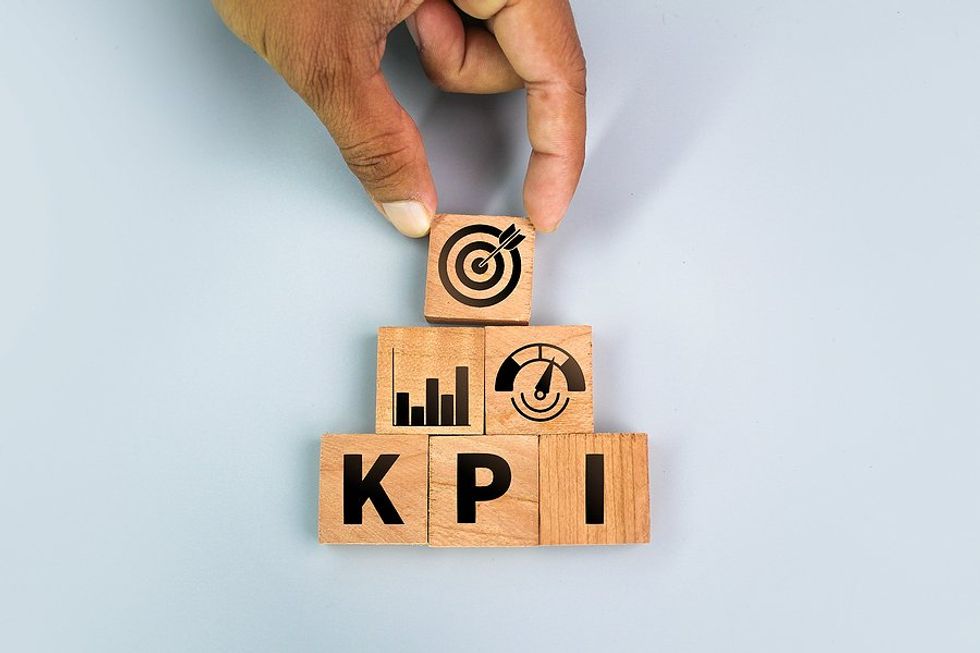
How many times does someone use a piece of business terminology which you don’t really understand? Everyone else nods sagely, so you think the best thing to do is to nod along sagely as well, instead of asking, “Excuse me, what exactly is a KPI?”
I’m going to explain what KPIs really are and how they work so that you can discuss them intelligently and make sensible decisions.
Let's Start With The Acronym

Bigstock
KPI means “key performance indicator.” There are a number of origin stories. The most popular involves public sector management.
In 1980s Britain, where Margaret Thatcher’s Conservative Party were trying to find ways to run government more like businesses, they came up against the challenge of measuring the performance of organizations that don’t, and aren’t intended to, make money. So, they started using KPIs to do the job.
KPIs often focus on what happens within processes. Businesses realized that they could use them too. Information technology was becoming available to crunch the numbers. It was the perfect breeding ground for KPIs.
Basic Concepts

Bigstock
KPIs (or “metrics”) measure something in numerical terms. Sometimes, organizations try to justify funding requests by “measuring” the unmeasurable. An organization may quantify “engagement” by counting how many meetings they have with their target audience, how many people were attending the meetings, etc. While this measures “activity,” does it necessarily measure “engagement”? How many people pay attention during the meetings? What happens because of these meetings?
When someone presents you with a KPI, ask how it’s calculated or what it is supposed to represent.
Lagging & Leading Indicators

Bigstock
Lagging indicators are used to measure what has happened while leading indicators are used to predict what is going to happen. Lagging indicators, which measure what has happened, are often used as leading indicators, to infer what is going to happen.
Average handling time (AHT) is a good example. It measures the average length of time a contact center agent spends working with each customer, including talk time, hold time, and after-call work. It is based on calls that have been finished, so it can rightly be considered a lagging indicator.
AHT is also used to infer how many calls agents will handle in the future. AHT is an integral part of forecasting and planning. In this way, AHT is also a leading indicator.
When someone quotes a KPI you are unfamiliar with, ask if it’s a lagging indicator or a leading indicator. And if they say it’s a leading indicator, ask why.
Aggregated Metrics

Bigstock
Aggregated metrics or KPIs are those which don’t measure something directly, but instead combine a series of other metrics to come up with an overall score. Performance ratings are a typical example.
A contact center agent gets a quarterly performance rating. Her bonus depends on this. It is a combination of her AHT, how many calls she handled in the quarter (productivity), how many hours she worked in the quarter (attendance), and a quality rating based on one call evaluated per week by her supervisor.
Her performance rating doesn’t only depend on the four statistics shown above. It also depends on how important the person designing the metric thinks each statistic is. She might have perfect quality scores in all the calls evaluated, but if quality is given a 10% weighting and AHT has a 40% weighting, then her calls being longer than the average will work against her, regardless of her quality scores.
The choice of metrics is also important. Her “performance” depends on AHT, productivity, attendance, and quality. A contact center shift has a finite length, so if AHT goes up, productivity will inevitably go down, so the two metrics are more or less measuring the same thing.
The choice of metrics has an influence on behavior. I am an agent. If I know I am going to lose my bonus spending too long trying to help a customer, then I will rapidly escalate him to Tier 2 if I can’t solve his problem quickly.
"Every Metric Has Its Place."

Bigstock
To understand a metric, you need to know where it sits in the process you are measuring. Traditionally, there are four places where they can sit.
Inputs: They measure what happens to contributing factors before the process starts. Contact center classics are “number of calls offered” or “right party connects.” On the HR side, they can include “agent churn.”
Process: They measure what actually happens during the process. Most contact center KPIs are "process” KPIs. Classics in the contact center world include service level (percentage of calls answered within a specified number of seconds) or AHT.
Outputs: This is what the process produces as complete units of finished work. The contact center “classic” is “productivity,” the number of calls handled. Output measures should be hard numbers. If an “output” measure is a fuzzy aggregate KPI like “engagement,” then it’s worth asking what exactly the process produces.
Outcomes: These are intended to measure the consequences of the process. They do not always correlate with outputs. NPS scores are a typical example. High-tech contact centers may use customer sentiment scores. Outcome KPIs are more likely to be aggregated, which means they may be more subject to manipulation or bias. If you’re not sure what an outcome KPI means, try asking what it measures or how it relates to the process it’s measuring.
Wrapping Up
Done right, KPIs are a valuable tool to understand how processes are performing. They do need to be well considered and applied intelligently. If you’re looking to overhaul your KPIs and would like to bounce a few ideas around, why don’t we get in touch?
- Using Quality Management To Improve KPIs ›
- Why Purpose-Driven Brands Are Successful ›
- Executive Spotlight: How Leaders Should Measure The Effectiveness Of Their Remote Workers ›

 Bigstock
Bigstock Bigstock
Bigstock Bigstock
Bigstock


